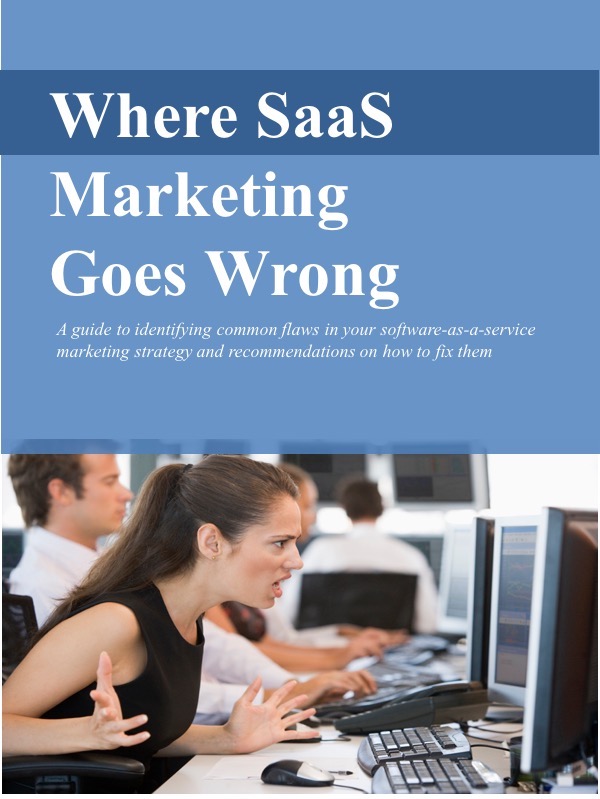Winning SaaS Customers isn’t a Smooth and Steady Process
/My dog-eared copy of “Selling for Dummies” lays out a seven-step selling process. Other experts plot a similar cycle, some with 5 steps, others with 8 or 9 steps. These are useful, plotting out a logical process.
But when it comes to marketing and selling software-as-a-service (SaaS) solutions, they aren’t quite accurate. What’s missing are the gaps between each step.
Most times, selling SaaS solutions isn’t a smooth flow from one step to the next. Instead, it’s more a stream with steep ladders along the way. Prospects, like fish, need to hop up the steps on the ladder to move ahead.
Sometimes they make the leap to the next level. But sometimes they don’t make it, sometimes they need to wait before trying the leap, and sometimes they float backwards away from the goal.
(Okay, I think I’ve reeled out as much as I can with this fish and stream metaphor.)
Prospects are busy
Why this interrupted, start-stop-start again, process? Why do prospects move forward, then stop, move backwards, and then start again?
One reason: they’re busy. Remember that the people evaluating and buying SaaS solutions have lots of other things on their to-do list. As much as you, the sales or marketing person would like to think so, your prospect is usually not spending all their time thinking about your solution.
If they’re an HR manager, they’ve got day-to-day responsibilities for HR tasks. If they’re a sales executive, they need to tend to Sales issues. Same for finance, marketing, development professionals, or whoever else you’re selling to. They have day jobs. (See “Your Prospect Has a Day Job.”)
This means they may be focused on evaluating your solution one day – or maybe one hour – but then other priorities intervene. The “evaluating solutions task” drops from the top of their to-do list down a few notches. They go from “actively engaged” to “radio silence.”
If you’re selling or marketing SaaS solutions, don’t despair. Just recognize that this is how the process works. And you can do a few things to deal with it.
Be ready when your prospects are ready
When prospects are stuck somewhere in the evaluation and purchase process, it doesn’t always mean they’re no longer a potential customer. Sometimes they’ve lost budget or bought a competitor’s product. But usually, it’s because they’ve been interrupted by other tasks.
Usually once they work through whatever tasks interrupted them, they’ll be back. Your job then is to stay in front of them through the delay. When they do refocus on evaluating a solution, you’ll be right back in front of them.
Two quick notes on this practice of staying on prospects’ radar screen:
Every communication to prospects should provide a clear path to make it easy for them to signal they’re ready to re-engage and move forward.
Make it easy for them to opt-out from your communications. If they’re truly no longer interested, you’re just spamming them.
Push the need for urgent action
Sometimes prospects that have gone dormant just need a reminder of why they contacted you in the first place. At some point something had motivated them to connect with you. They had a problem that they needed to fix.
Remind of that problem and try to push it back up toward the top of their to-do list. Explain that there’s a high cost to do nothing and ignoring it won’t make it go away.
At this point, keep in mind that there’s no point in highlighting your wonderful features and functions. Before they’ll pay any attention to those things, the prospect needs to be reminded that they have a painful problem that needs urgent attention.
Route slow prospects back to Marketing
Sometimes prospects should be handed from Sales back to Marketing. Don’t waste a salesperson’s time with prospects that need more nurturing. Instead of engaging one-to-one through a salesperson, it’s usually a lot less expensive to have Marketing do that cultivation work, sending out emails, retargeting, or other cost-effective campaigns.
You can build this “return to Marketing” step into your sales process. If a prospect has no live engagement with a sales person after some period, or doesn’t respond to some set of triggers, send them back into the Marketing pool, Depending on your classification scheme, this may mean relabeling them from a “sales qualified lead” to a “marketing qualified lead.” When they’re ready – and your Marketing programs are doing what they’re supposed to do – they prospect will escalate themselves back into the process.
